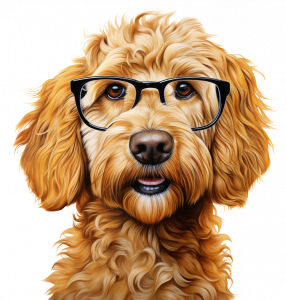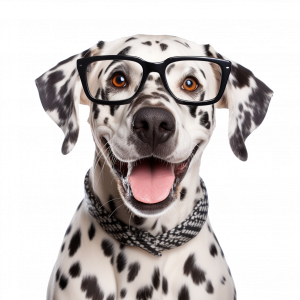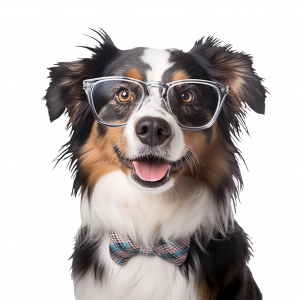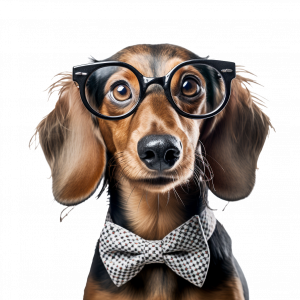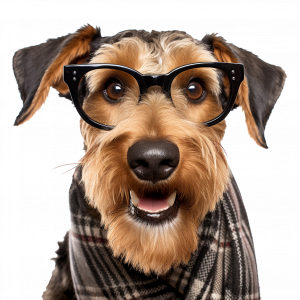Object Detection: Revolutionizing Computer Vision with Advanced AI Techniques
Object detection is a crucial step in the realm of computer vision, enabling machines to identify and locate multiple objects within digital images or video frames. This important task has seen significant progress in recent years, driven by advances in deep learning methods and neural network architectures. From autonomous driving to healthcare object detection, the applications of this technology are vast and continue to expand across various sectors.
Understanding Object Detection
At its core, object detection is a computer vision technique that goes beyond simple image classification. While image classification assigns a single label to an entire image, object detection takes this concept further by identifying multiple objects, their classes, and their precise locations within an image or video. This process involves both object recognition and object localization, making it a more complex and computationally intensive task.
Object detection models typically perform three main functions:
- Identify the presence of objects in an image or video frame
- Classify these objects into predefined categories
- Locate the objects by drawing bounding boxes around them
The ability to detect multiple objects and provide their spatial information makes object detection an essential component in various real-time applications, from security systems to autonomous vehicles.
Object Detection Models: A Deep Dive
The field of object detection has evolved rapidly, with researchers developing increasingly sophisticated models to improve accuracy, speed, and efficiency. These models can be broadly categorized into two main types: two-stage detectors and single-stage detectors.
Two-Stage Detectors
Two-stage detectors, as the name suggests, perform object detection in two distinct stages. These methods first propose regions that might contain objects and then classify these proposed regions. Some popular two-stage detectors include:
- R-CNN (Region-based Convolutional Neural Network)
- Fast R-CNN
- Faster R-CNN
- Mask R-CNN
The two-stage approach typically offers higher accuracy but can be slower in processing, making them less suitable for real-time applications on mobile devices or in scenarios requiring rapid detection.
Single-Stage Detectors
Single-stage detectors, on the other hand, perform detection in a single forward pass through the neural network. These models are generally faster but may sacrifice some accuracy compared to their two-stage counterparts. Popular single-stage detectors include:
- YOLO (You Only Look Once)
- SSD (Single Shot MultiBox Detector)
- RetinaNet
The speed of single-stage detectors makes them ideal for real-time object detection tasks, especially on mobile devices or in applications where low latency is crucial.
Deep Learning Methods in Object Detection
The advent of deep learning has revolutionized the field of object detection. Convolutional Neural Networks (CNNs) form the backbone of most modern object detection systems. These networks are particularly adept at processing grid-like data, such as images, making them ideal for computer vision tasks.
Deep learning methods for object detection typically involve:
- Feature extraction using CNNs
- Region proposal (in two-stage detectors)
- Object classification
- Bounding box regression
The use of deep learning has significantly improved the accuracy and robustness of object detection models, allowing them to handle complex scenes, occlusions, and variations in object appearance and scale.
Real-Time Object Detection: Challenges and Solutions
Real-time object detection presents unique challenges, particularly in balancing speed and accuracy. In many applications, such as autonomous driving or video surveillance, the ability to detect objects quickly is as important as detecting them accurately.
Some challenges in real-time object detection include:
- Processing high frame rates in video analysis
- Detecting small or distant objects
- Handling varying lighting conditions and occlusions
- Optimizing model performance for mobile devices or embedded systems
To address these challenges, researchers have developed various approaches:
- Lightweight architectures optimized for mobile devices
- Model compression techniques to reduce computational requirements
- Hardware acceleration using GPUs or specialized AI chips
- Efficient algorithms for video processing, such as frame skipping or motion-based detection
These advancements have made real-time object detection feasible in a wide range of applications, from smartphone apps to autonomous vehicles.
Applications of Object Detection
The versatility of object detection has led to its adoption across numerous industries and use cases. Some prominent applications include:
Autonomous Driving
In the automotive industry, object detection plays a crucial role in enabling autonomous vehicles to navigate safely. These systems must accurately detect and track various objects, including other vehicles, pedestrians, traffic signs, and obstacles in real-time. The ability to quickly identify and respond to potential hazards is essential for the safety and efficiency of autonomous driving systems.
Healthcare Object Detection
In healthcare, object detection is being used to analyze medical images, assist in diagnoses, and improve patient care. Applications include:
- Detecting tumors or abnormalities in X-rays, MRIs, or CT scans
- Analyzing microscope images for cell detection and counting
- Assisting in surgical procedures through real-time instrument tracking
These applications are helping to enhance diagnostic accuracy and streamline medical workflows.
Retail and Inventory Management
Retail stores are leveraging object detection to improve inventory management and enhance the customer experience. Use cases include:
- Automated checkout systems that can identify products without barcodes
- Real-time inventory tracking by analyzing shelf images
- Customer behavior analysis through video analytics
These applications are helping retailers optimize their operations and provide more personalized services to customers.
Security and Surveillance
Object detection is a key component in modern security and surveillance systems. Applications in this domain include:
- Intruder detection in video feeds
- Identifying suspicious objects or behaviors in public spaces
- Traffic monitoring and incident detection
By automating the detection of potential security threats, these systems can significantly enhance public safety and operational efficiency.
Object Detection Methods: A Comparative Analysis
When choosing an object detection method for a specific application, it’s important to understand the trade-offs between different approaches. Here’s a comparison of some popular object detection methods:
R-CNN and Its Variants
R-CNN (Region-based Convolutional Neural Network) was one of the first deep learning-based object detection models to achieve significant improvements over traditional methods. However, it was computationally expensive and slow. Subsequent variants like Fast R-CNN and Faster R-CNN addressed these issues:
- Fast R-CNN improved speed by processing the entire image through a CNN once and using ROI pooling
- Faster R-CNN introduced the Region Proposal Network (RPN), further improving both speed and accuracy
These two-stage detectors typically offer high accuracy but may be slower than single-stage methods.
YOLO (You Only Look Once)
YOLO revolutionized object detection by framing it as a single regression problem. It divides the image into a grid and predicts bounding boxes and class probabilities for each grid cell in a single forward pass. This approach makes YOLO extremely fast, capable of processing images in real-time:
- Pros: Very fast, suitable for real-time applications
- Cons: May struggle with small objects or dense scenes
SSD (Single Shot MultiBox Detector)
SSD is another single-stage detector that improves upon YOLO by using multiple feature maps for detection at different scales. This allows it to handle objects of various sizes more effectively:
- Pros: Fast and more accurate than early versions of YOLO, especially for small objects
- Cons: Still not as accurate as two-stage detectors for certain tasks
RetinaNet
RetinaNet introduced the concept of focal loss to address the class imbalance problem in object detection. This makes it particularly effective in scenes with many objects:
- Pros: High accuracy, especially in dense object scenarios
- Cons: Slightly slower than YOLO or SSD
The choice between these methods often depends on the specific requirements of the application, such as speed, accuracy, and the types of objects being detected.
Evaluating Object Detection Models
Assessing the performance of object detection models is crucial for comparing different approaches and ensuring that a model meets the requirements of a specific application. Several metrics are commonly used to evaluate object detection models:
Intersection over Union (IoU)
IoU measures the overlap between the predicted bounding box and the ground truth bounding box. It’s calculated as the area of intersection divided by the area of union of the two boxes. A higher IoU indicates better localization accuracy.
Average Precision (AP)
AP is a popular metric that combines both precision and recall. It’s calculated for each class and then averaged across all classes to give the mean Average Precision (mAP). AP is often calculated at different IoU thresholds to evaluate performance under varying strictness levels.
Frames Per Second (FPS)
For real-time applications, the speed of the object detector is critical. FPS measures how many images the model can process per second, indicating its suitability for real-time use cases.
Model Size and Computational Requirements
These factors are important when considering deployment on mobile devices or embedded systems with limited resources.
When evaluating object detection models, it’s important to consider these metrics in the context of the specific application requirements. For example, a model with slightly lower accuracy but much higher speed might be preferred for a real-time mobile application.
Challenges in Object Detection
Despite the significant progress in object detection, several challenges remain:
Occlusion and Overlapping Objects
When objects partially obscure each other, it can be difficult for models to accurately detect and localize them. This is particularly challenging in crowded scenes or when dealing with small objects.
Scale Variations
Objects can appear at vastly different scales within an image or across a dataset. Developing models that can effectively detect both very small and very large objects remains a challenge.
Domain Adaptation
Models trained on one dataset may not perform well on images from a different domain. Improving the ability of models to generalize across domains is an active area of research.
Computational Efficiency
While great strides have been made in developing efficient models, there’s still a need for further improvements, especially for deployment on edge devices with limited computational resources.
Handling Rare or Novel Objects
Most object detection models struggle with objects that are rare in the training data or completely novel. Improving performance on long-tail distributions and open-set detection are important challenges.
Future Directions in Object Detection
The field of object detection continues to evolve rapidly. Some exciting areas of ongoing research and development include:
3D Object Detection
Extending object detection to 3D space is crucial for applications like autonomous driving and robotics. This involves processing data from sensors like LiDAR and developing models that can understand depth and spatial relationships.
Few-Shot and Zero-Shot Learning
Developing models that can detect new object categories with very few or even no labeled examples is an active area of research. This could greatly reduce the data requirements for training object detection models.
Self-Supervised Learning
Leveraging large amounts of unlabeled data to improve object detection models through self-supervised pretraining is showing promising results.
Efficient Neural Architecture Search
Automating the design of efficient neural network architectures for object detection could lead to models that are both more accurate and more computationally efficient.
Multimodal Object Detection
Incorporating multiple data modalities, such as combining visual and textual information, could enhance object detection performance and enable more complex reasoning about detected objects.
Implementing Object Detection: Practical Considerations
For developers and researchers looking to implement object detection in their projects, several practical considerations come into play:
Choosing the Right Model
Selecting an appropriate object detection model depends on various factors:
- Application requirements (speed vs. accuracy)
- Deployment environment (cloud, edge devices, mobile)
- Types of objects to be detected
- Available computational resources
Popular frameworks like TensorFlow Object Detection API, Detectron2 (PyTorch), and YOLO offer pre-trained models that can be a good starting point for many applications.
Data Preparation and Annotation
High-quality, annotated data is crucial for training effective object detection models. This process involves:
- Collecting a diverse dataset representative of the target domain
- Annotating images with bounding boxes and class labels
- Augmenting data to increase diversity and robustness
Tools like LabelImg, CVAT, and RectLabel can assist in the annotation process.
Transfer Learning and Fine-Tuning
For many applications, starting with a pre-trained model and fine-tuning it on domain-specific data can yield good results with less training data and computational resources. This approach, known as transfer learning, is particularly effective when working with limited datasets.
Model Optimization for Deployment
Once a model is trained, it often needs to be optimized for deployment, especially for edge or mobile devices. Techniques include:
- Quantization: Reducing the precision of model weights
- Pruning: Removing unnecessary connections in the network
- Knowledge distillation: Training a smaller model to mimic a larger one
Frameworks like TensorFlow Lite and ONNX Runtime provide tools for model optimization and deployment across various platforms.
Ethical Considerations in Object Detection
As object detection technology becomes more pervasive, it’s important to consider the ethical implications of its use:
Privacy Concerns
Object detection in public spaces or on personal devices raises privacy concerns. It’s crucial to implement safeguards to protect individual privacy and comply with relevant regulations like GDPR.
Bias and Fairness
Object detection models can inherit biases present in their training data, potentially leading to unfair or discriminatory outcomes. Ensuring diverse and representative training data and regularly auditing model performance across different groups is essential.
Dual-Use Potential
While object detection has many beneficial applications, it could also be misused for surveillance or other harmful purposes. Developers and organizations should consider the potential impacts of their technology and implement appropriate safeguards.
Transparency and Explainability
As object detection systems make decisions that can significantly impact individuals and society, there’s a growing need for these systems to be transparent and their decisions explainable.
Conclusion
Object detection stands as a cornerstone technology in the field of computer vision, enabling machines to understand and interact with the visual world in ways that were once the domain of science fiction. From its foundations in traditional computer vision techniques to the current state-of-the-art deep learning methods, object detection has seen remarkable progress in recent years.
The ability to accurately identify and localize multiple objects in images and videos has opened up a vast array of applications across industries. From enhancing safety in autonomous vehicles to revolutionizing healthcare diagnostics, improving retail experiences, and bolstering security systems, object detection is making a significant impact on various sectors of our society.
As we look to the future, the field of object detection continues to evolve rapidly. Researchers and developers are pushing the boundaries of what’s possible, tackling challenges like 3D object detection, few-shot learning, and efficient deployment on edge devices. These advancements promise to further expand the capabilities and applications of object detection technology.
However, as with any powerful technology, it’s crucial to consider the ethical implications and potential societal impacts of widespread object detection use. Balancing the benefits of this technology with privacy concerns, addressing potential biases, and ensuring responsible development and deployment will be key challenges as object detection becomes increasingly integrated into our daily lives.
In conclusion, object detection represents a fascinating intersection of computer vision, deep learning, and real-world applications. Its continued development and responsible implementation have the potential to significantly enhance our interaction with the visual world, opening up new possibilities for innovation and improvement across numerous domains. As we move forward, the collaboration between researchers, developers, policymakers, and ethicists will be crucial in shaping the future of this important technology.









